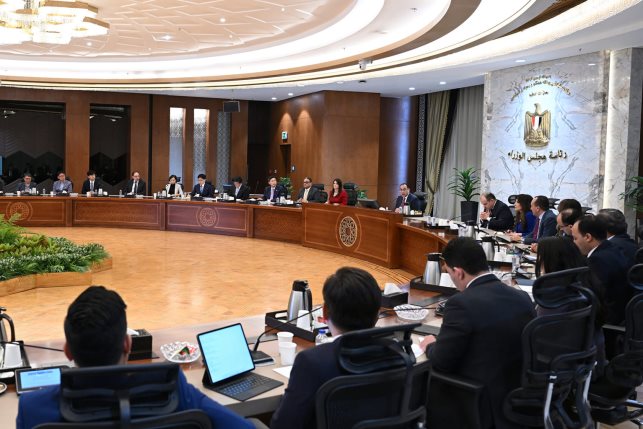Advocating for sustainability and decarbonization within cement industry with World Cement Assoc. CEO
Ahead of the highly-anticipated World Cement Association (WCA) annual conference on October 24th – 25th October 2023 in Dubai, Business Today had the chance to talk with the CEO of the WCA, Ian Riley

As one of the world’s highest-emitting industrial sectors, cement production is responsible for around 6-7% of global CO₂ emissions, and with global concerns over climate change accelerating various sector-wide transitions towards more sustainable business models, the cement industry will play a pivotal role in supporting the green movement.
Ahead of the highly-anticipated World Cement Association (WCA) annual conference on October 24th – 25th October 2023 in Dubai, Business Today had the chance to talk with CEO of the WCA, Ian Riley, to discuss the evolution of Egypt’s cement industry, the major players influencing the market, and sustainability within the industry.
Established in 2016, the WCA is the pioneering international cement association dedicated to representing and advocating for the global cement industry's interests worldwide. With a deep commitment to sustainability and innovation, the WCA actively collaborates with its members to propel the cement industry toward decarbonization, aligning with the UN's Sustainable Development Goals and the 2015 Paris Agreement.
Decarbonization and sustainability remain a crucial subject for all industries. How is the World Cement Association collaborating with its members to promote the implementation of sustainable technologies that can help combat climate change?
.png) Ian Riley - CEO, World Cement Association
Ian Riley - CEO, World Cement Association
Our annual conference, which this year will be held on October 24 & 25 in Dubai, is a critical opportunity for us to meet with members and non-members face to face and to facilitate the sharing of best practices and new ideas.
This year, we will highlight the progress made in reducing CO2 emissions.
Our WCA Awards for Innovation, Climate Action, and Model Plant all highlight the opportunities to improve operations and implement sustainable technologies. We have award winners from the MENA region as well as China, SE Asia, and South Asia who will share examples of what can be done and how they achieved it. Delegates to the conference will also be invited to visit these plants.
Sustainability often comes with costs and challenges. How can WCA and members balance the need for sustainability with the economic realities of the cement industry, especially in developing regions?
Cement producers have 3 levers to reduce CO2 emissions that save costs as well as reducing CO2 emissions. The levers are (1) improving energy efficiency; (2) switching from high carbon to low carbon fuels and electricity; (3) reducing the proportion of clinker in cement. For each of these, there are many technologies.
For existing plants, the two most important steps are:
- Switching from fossil fuels (usually coal) to waste-derived fuels and biomass (called alternative fuels or AF). One of the panels at our conference will share their experience of overcoming the challenges and increasing the portion of AF
- Increasing the proportion of supplementary cementitious materials (SCMs) in cement. This is the subject of another conference session.
What do you see as the major growth drivers and challenges for the cement sector in Egypt and the wider MENA region?
The following are the main drivers of cement demand in Egypt:
- Population growth: Egypt has a rapidly growing population, which is expected to reach 120 million by 2030. This is driving demand for new housing, schools, hospitals, and other infrastructure.
- Government investment: The Egyptian government is investing heavily in infrastructure projects
- Urbanization and real estate development
In addition to these general drivers, there are a number of specific factors that are contributing to demand in 2023, such as:
- The Egyptian government is building a new administrative capital city east of Cairo.
- The Suez Canal Economic Zone.
-The Egyptian tourism sector is recovering from the COVID-19 pandemic, and this is leading to new investment in hotels, resorts, and other tourism infrastructure.
Overall, the outlook for the construction materials sector in Egypt is very positive. The combination of strong economic growth, government investment, and population growth is expected to drive sustained demand for construction materials and services in the coming years.
Are there any notable examples of sustainable cement production projects in Egypt or the MENA region that the WCA has been involved in or has observed closely?
One of the Egyptian cement companies is featured in our sustainability awards this year. Details of this will be released at the WCA conference.
How does WCA collaborate with governments and industry players in Egypt and the MENA region to align cement production with local and global sustainability goals?
WCA advocates for policies that will help the industry decarbonize. For hard-to-abate sectors such as cement the role of government is indispensable in reaching net zero.
Regulation plays a key role in creating incentives to decarbonize. Governments should introduce carbon pricing schemes and should ensure that the carbon price is high enough to drive change. The experience in Europe shows that this can create a more profitable sustainable industry.
There are 2 other important roles that governments can play. The first is to create a market for low-carbon cement and concrete through preferential government procurement policy.
The second is to push forward revised standards that focus on performance and are not overly restrictive on the materials that can be used. Cement and concrete product standards are a major brake on progress in many countries around the world.
Given the global focus on sustainability and climate goals, how do you see the cement industry evolving over the next decade, and what role will the association play in driving this transformation?
We can expect to see a great deal of change over the next decade in terms of the products demanded by our customers, improving plant efficiency and reducing emissions.
The World Cement Association catalyzes this change by keeping our members abreast of the latest technology and facilitating the sharing of best practices. We encourage members to respond to the expectations of customers and society at large. We will continue to encourage regulators to take effective steps to create the right incentives for change.
Can you share some insights into the most revolutionary technologies currently being adopted in the cement industry to reduce energy intensity and carbon emissions?
We have had some very interesting submissions to WCA’s innovation and model plant awards that combine various new technologies to bring about a step change in performance.
The best new plants are capable of clinker production at emissions at least 20% lower than those built 25 years ago. With the increasing use of SCMs, we can expect cement emissions to continue to fall.
We estimate that carbon emissions from cement in the MENA region could be cut by almost half by deploying technologies that are already proven elsewhere and that would yield a cost reduction.
Beyond these traditional levers, the cement industry is starting to execute carbon capture and storage (CCS) projects, especially in Europe and North America.
Are there any emerging trends that you believe have the potential to further accelerate progress toward reducing the carbon footprint of the cement industry?
One of the most interesting developments is the excellent profitability of the European cement industry, despite high carbon prices and an ever-reducing free allocation of carbon allowances. This shows that a well-designed carbon trading system can help the industry to develop.
Another encouraging trend is customer-driven demand for more sustainable solutions, including greater circularity and lower carbon. If governments take the lead in this area, we could see rapid development of markets for low-carbon recycled products.





